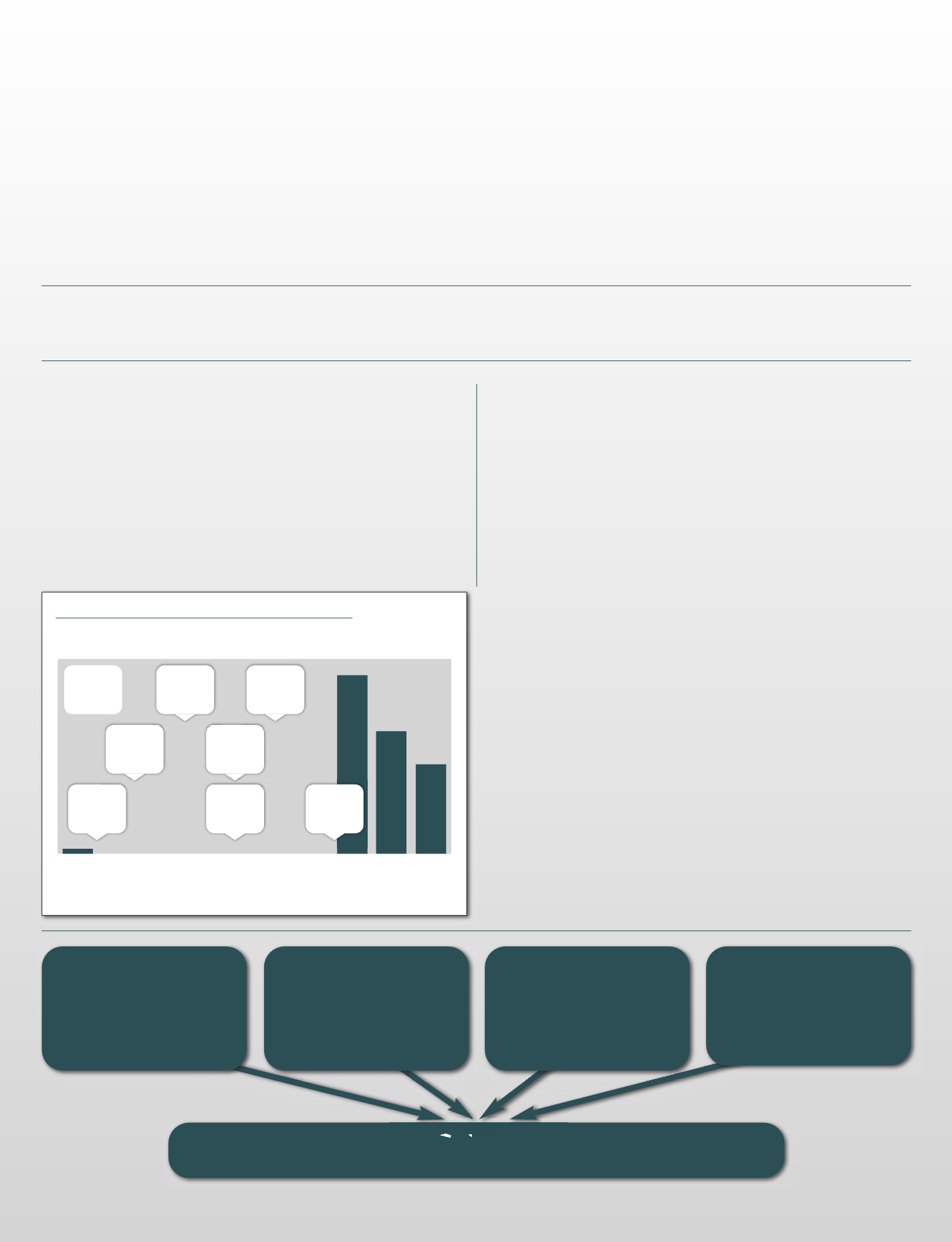
T
he landscape for addiction treatment is changing. Since 2001, there have
been three phases in the modernisation of treatment for substance
misuse problems – access, retention, completion – that brought us to
where we are now. We are now in an evolving fourth phase which is
about producing real world recovery outcomes.
As a result of the Health and Social Care Act 2012, the public health function
was transferred from the health service to the 152 local authorities. It is difficult to
see where the investment in drug treatment is going with any precision but the
direction is very clear; it is going down. Duncan Selbie, chief executive of Public
Health England, addressed substance misuse commissioners and providers at a
recent conference in Bristol entitled
Sustainable recovery solutions
. He highlighted
the need to think and work smarter in these times of austerity: ‘The music has
changed – you need to learn a new dance!’
TreaTmenT
Encouraged by results of a new formof community opiate detoxification, a team from
substance misuse services in Bristol and the SouthWest offer their ‘recipe for recovery’
22 |
drinkanddrugsnews
| July/August 2016
DETox in a box
Ironically, tightening budgets might be good news for abstinence-based
community recovery. At the same conference, we noted that the current and
evolving focus on real world social outcomes (such as jobs, homes, family and
friends) offers great opportunities for the development of abstinence-based
recovery and this reinforces a focus on innovation, improved outcomes and
increased value.
As previous and current providers of substance misuse services in Bristol and the
South West, we feel that our ‘detox in a box’ model demonstrates those very
objectives – innovation, improved outcomes and increased value. However, not
being the best of dancers, we prefer to liken it to cooking – our ‘recipe for recovery’.
INNOVATION
Back in 2010, South Gloucestershire Drug and Alcohol community services
introduced a novel two-week community opiate detox protocol, which was created
to address the problem of a long backlog of service users awaiting a structured
opiate detox against a climate of limited bed availability for a medically
supervised detox.
At this time, the practice was mainly focused on substitute prescribing and risk
minimisation. The ‘detox in a box’ protocol brought a shift in mindset towards
recovery and abstinence as well as higher aspirations for service user success,
bringing hope back into the hearts of both clients and staff.
IMPROVED OUTCOMES
‘Detox in a box’ was rapidly embraced by both key workers and service users and
proved highly successful over the subsequent four years, leading to a dramatic
improvement in the number of service users exiting drug-free from our services. In
the first year after its introduction, the number of patients achieving abstinence
quadrupled. This dramatic improvement cleared the backlog of highly motivated
clients waiting for a detox. Subsequent years showed a similar steady increase in
the numbers of those achieving abstinence.
Unlike opiate detox methods involving gradual dose reduction, which may feel
like an endless ‘Russian doll’ game (often ending up as long-term sub therapeutic
OST prescribing), ‘detox in a box’ gave our service users a clear goal: the prospect of
SuCCESSful DETox
The rise and fall of investment in drug treatment
From £18m, 1982 to £1 billion in 30 years
Reductions of up to 50%
1982 1988 1998 2001
2002 2005 2010 2013 2015 2016
£1,000
million
£700
million
£500
million
ACMD
AIDS & drug
misuse
policy
Increase
access, DIP
criminal
justice
ACMD
environment
policy
Improve
treatment
retention
NTA
increases
access to
treatment
Government
focus on
recovery
Public
Health
England
Policy &
investment
examples
Spending on opioid & related dependence, UK
Source: applied strategic analysis NIGHTWATCHMAN database
Good support
around detox for
service users
Clear ‘sense of
progression’ as
treatment is short
and focussed
Tailored medications
that are used to
reduce withdrawal
symptoms
Easily understood
explanations for service
users and staff: expectations
and responsibilities
are clear so everyone
works together


